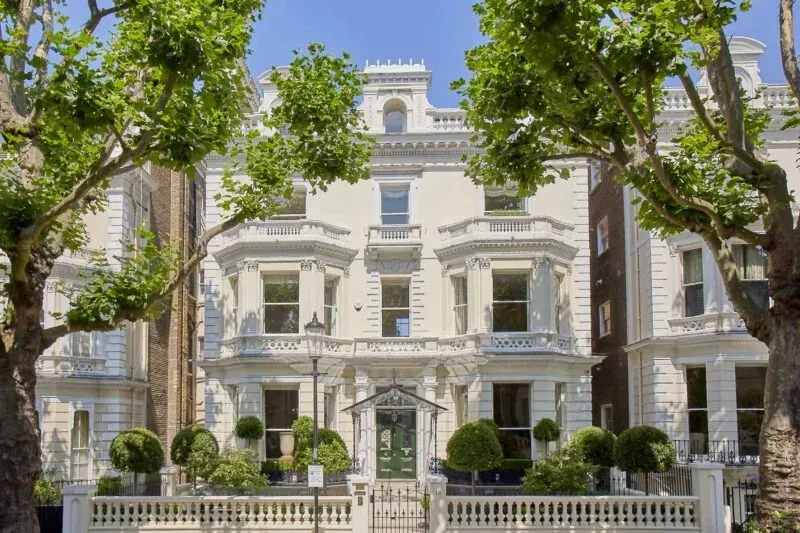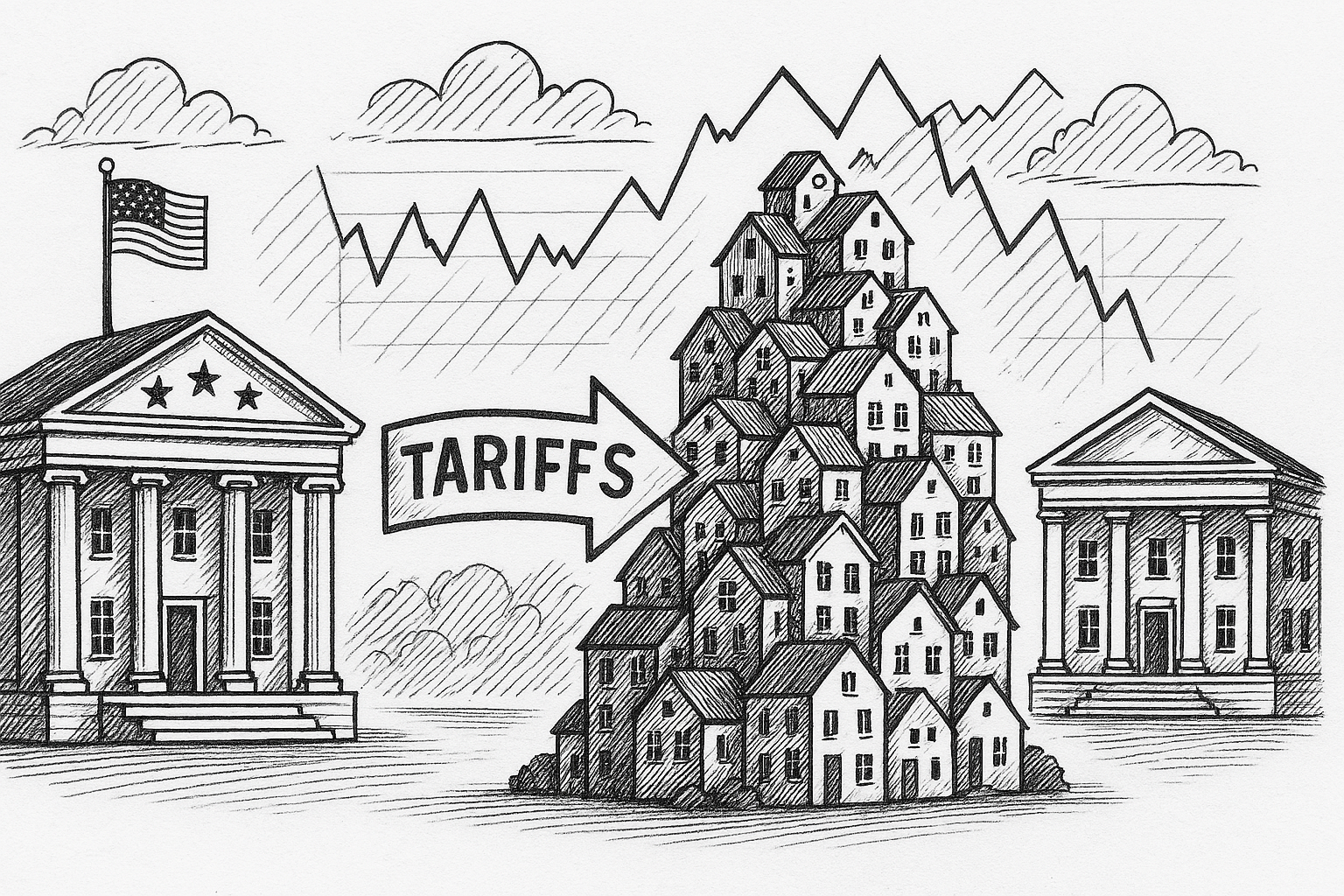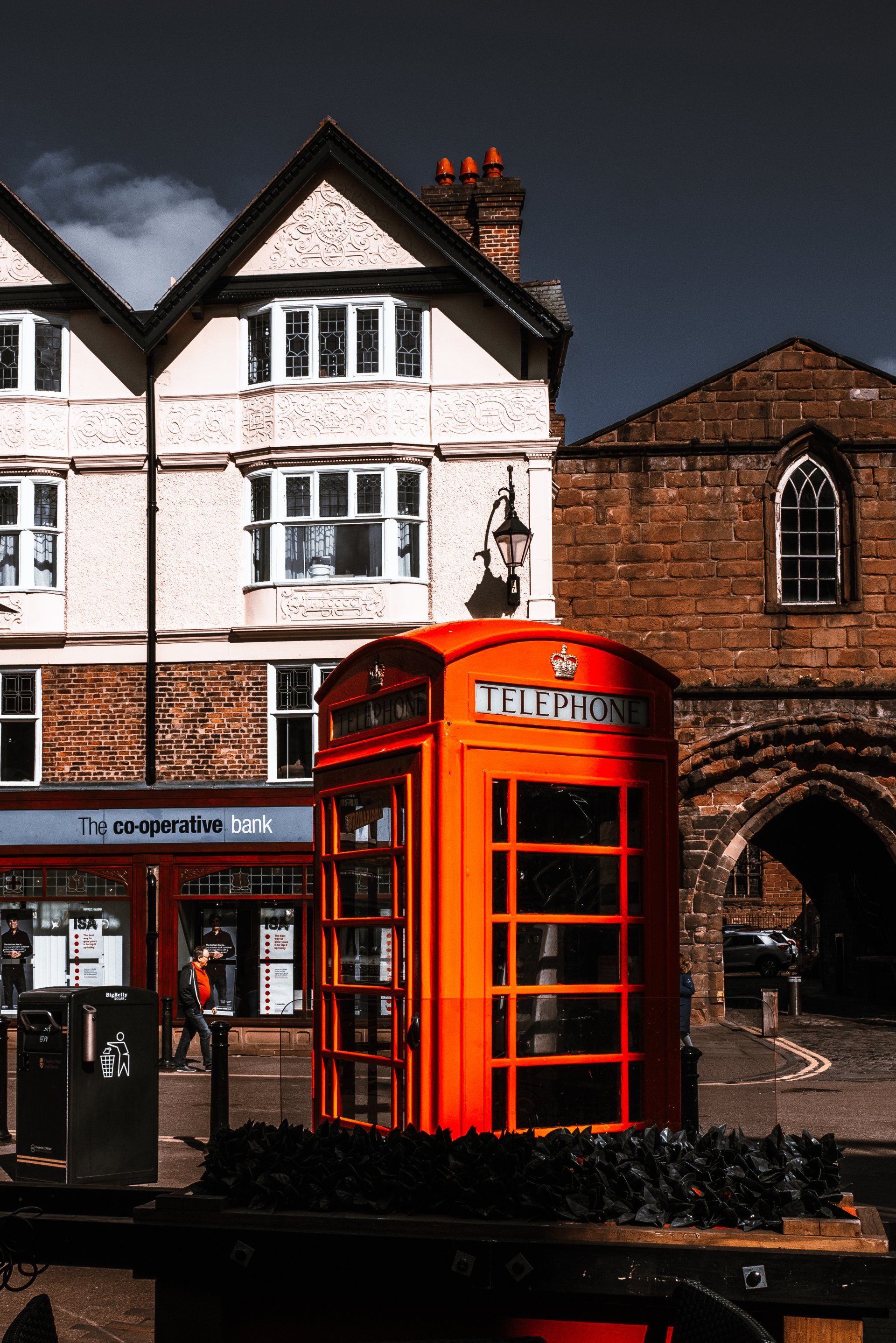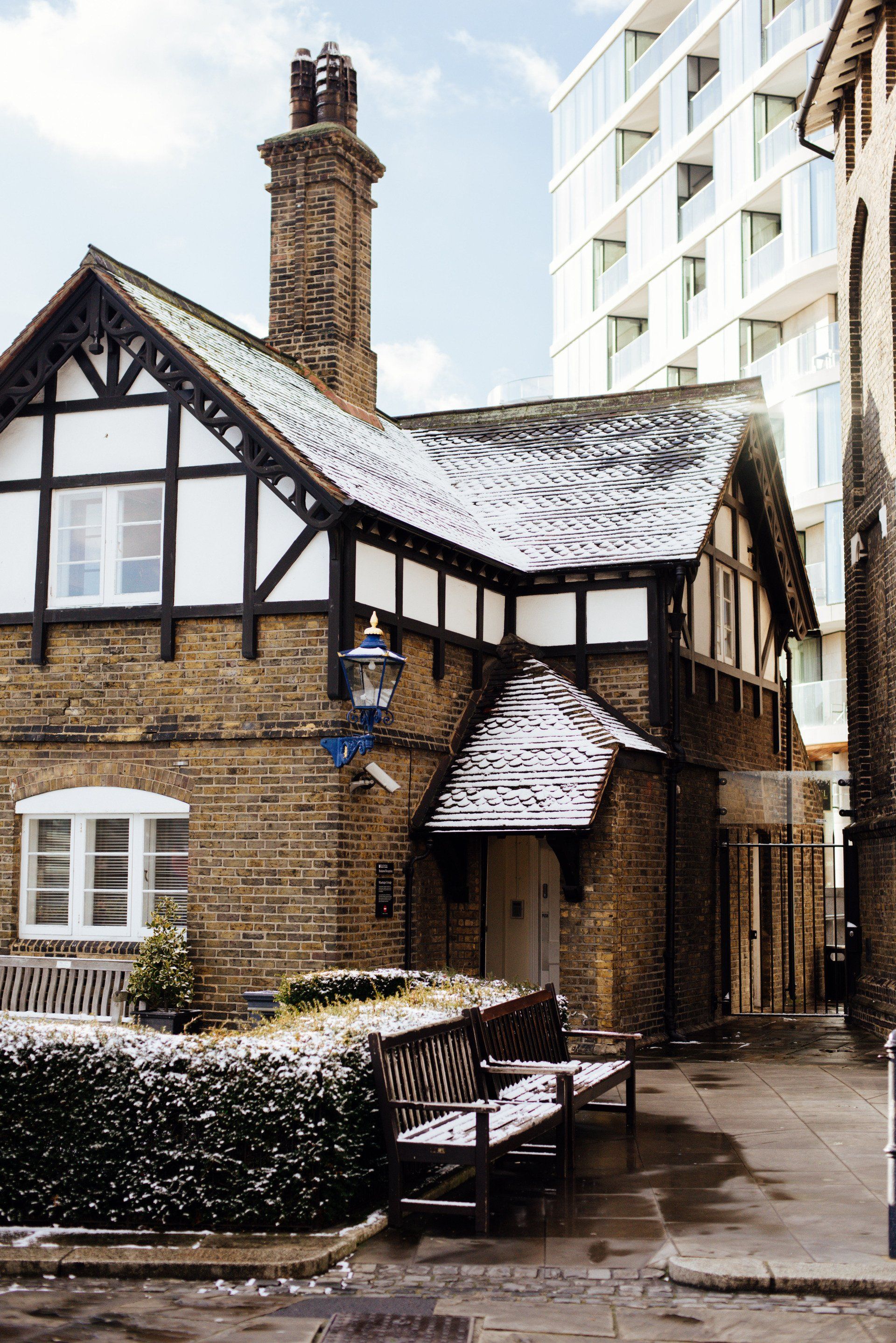London Prime Residential Property Market Update – April 2025
London’s prime residential market, the high-end, luxury housing segment in prestigious areas, has entered 2025 amid cautious optimism. After several years of adjustment, prime home values remain below their mid-2010s peak, yet buyer demand is showing signs of revival. International investors continue to view London as a safe haven, even as tax and policy changes alter the investment landscape.
Here at Willow we've scanned through 29 different resources specifically focused on PCL and created a detailed overview of recent price trends, the 2025 outlook, notable prime sales, and policy factors shaping this exclusive market.
Recent Price Trends in Prime London
Softening Prices with Pockets of Growth:
Prime London home values have seen modest declines over the past year, with Prime Central London (PCL) lagging and Prime Outer London (POL) proving more resilient. In prime central London, average prices in Q1 2025 were about 1.3% lower than a year prior.
This continued a gentle slide, PCL values ended 2024 roughly 1–2% down year-on-year, leaving them 20.7% below their 2014 peak in nominal terms (and over 40% below peak after inflation). By contrast, prime outer London (leafy high-end suburbs and emerging luxury enclaves) has seen slight growth; prices were up about 1.5% year-on-year as of March 2025, supported by domestic “needs-based” buyers with substantial equity.
Monthly Momentum:
Recent months have been mixed. Late 2024 saw central London prices flatten or dip, November 2024 prices were flat on the month in PCL (annual change -1.4% at that point), while Q4 2024 overall saw PCL values fall 0.8% and outer prime inch up 0.3%.
Entering 2025, there are tentative signs of stabilisation. February 2025 even saw a slight annual uptick in some prime indices for the first time since mid-2023 (per LonRes data). However, Q1 2025 data from Knight Frank showed PCL still experiencing its steepest quarterly drop since early 2024 (-0.7% in the three months to March). The imbalance of supply and demand is putting mild downward pressure on prices: new seller listings in London’s prime markets were 28% higher than normal in Q1, while new buyer registrations were 5% lower. This oversupply has tilted the negotiating advantage to buyers, resulting in softer prices and longer selling times for overpriced assets.
Hotspots and Laggards:
Performance varies widely by neighbourhood. Some ultra-prime central districts have been hit hardest by recent corrections, Knightsbridge, Belgravia, and South Kensington saw quarterly price falls of 1.5–2.0% in late 2024 as international demand cooled. These traditional “golden postcodes”, highly dependent on wealthy overseas buyers, are adjusting to tax changes (more on that below), making buyers price-sensitive.
In contrast, several emerging prime areas on the fringes of central London are outperforming. For example, up-and-coming luxury neighborhoods in parts of Inner East London have seen notable growth: Hackney and Shoreditch recorded +1.7% and +1.4% price gains in Q4 2024 respectively, bucking the wider slowdown.
These “maturing prime” areas offer relative value and have attracted affluent younger buyers, supporting price increases. Even within PCL, previously undervalued pockets like Bayswater (W2) have shown resilience, values there are only about 9.6% below their 2014 peak (versus -20%+ in more expensive Knightsbridge or Chelsea), thanks in part to major regeneration projects on Queensway.
This illustrates the localised nature of prime London: while the overall trend has been flat-to-declining prices in the past year, certain districts (especially those seen as good value or benefiting from renewal) are bucking the trend.
Investment Outlook for 2025
Cautious Optimism:
The outlook for London’s prime residential sector in the remainder of 2025 is guardedly optimistic but “sober”. After a volatile 2024, there are early signs that buyer sentiment is improving as financial conditions stabilise. Market activity picked up at the start of the year, buyer demand in early 2025 was running 14% higher than in early 2024, according to Zoopla’s market data. This uptick suggests some pent-up demand is being released now that the economic and political uncertainty of 2024 (which included a UK general election and delayed budget) has cleared.
Indeed, Knight Frank notes that the first quarter of 2025 was marked by hesitation, but “some of that will begin to lift” going forward. With the playing field now levelled after a March stamp duty deadline, Knight Frank expects transaction volumes to recover toward summer 2025.
However, the mood remains cautious: Savills observes a “persisting cautious mentality” among prime buyers and sellers, a hangover from last year’s economic jitters. Well-priced properties are selling, but many buyers are negotiating hard, given higher financing costs and recent price falls.
Prime Market Forecasts:
Major property consultancies have mixed forecasts for prime London performance in 2025, reflecting those uncertainties. Knight Frank projects a return to modest price growth, roughly +2% for prime central London in 2025, which would be PCL’s strongest annual gain since 2014. This “slow but steady recovery” view assumes that economic stability and a clearer tax regime will draw buyers off the sidelines.
In fact, Knight Frank’s latest Prime London Forecast was revised down from 3% to 2% growth for 2025 after the UK’s October 2024 Budget, precisely because new tax measures on luxury property tempered expectations. By contrast, Savills holds a more bearish short-term view, noting that headwinds like tax changes and high interest rates could result in further price softening in PCL. Savills analysis ties most of the recent PCL price decline to these fiscal changes, the abolition of the “non-dom” tax status and increases in stamp duty, and suggests prime central values might dip ~4% in 2025 before rebounding.
Nonetheless, Savills remains positive on the medium term: they forecast that today’s lower pricing will attract buyers and yield a +9% cumulative rise in PCL values over the next five years In the prime outer London family-house markets, Savills expects essentially flat prices in 2025, followed by stronger growth as interest rates ease, roughly +15% growth through 2029 is projected for outer prime areas.
In sum, the consensus is that 2025 will be a year of consolidation: Prime prices may flounder a bit more in the first half under lingering pressure, but by late 2025 there is potential for a modest recovery as economic conditions improve (especially if inflation and mortgage rates come down). Investor sentiment should gradually brighten, though no one is predicting a return to the exuberant growth of the early 2010s in the near term.
Investor Demand and Drivers:
Key demand drivers for prime property in 2025 include foreign exchange dynamics, global geopolitical shifts, and London’s enduring appeal to wealth:
- Resurgent US and Middle Eastern Interest:
- A notable trend is the surge in buyers from the United States and the Middle East, who are capitalising on a favourable currency situation. The British pound remains relatively weak against the US dollar (and dollar-pegged currencies), effectively giving dollar-based buyers a significant discount on UK real estate. This has vaulted Americans into the top spot among overseas purchasers of prime London homes. In 2024, Americans overtook Chinese buyers as the largest foreign buyer group in PCL. U.S. nationals accounted for about 10–12% of prime central London purchases by overseas buyers in 2024, a share larger than that of any other nationality. High-profile American buyers (from tech billionaires to fashion moguls) have been making headlines with prime London acquisitions (examples below), underscoring this trend. Meanwhile, Middle Eastern buyers continue to play a major role, especially at the ultra-prime end. In 2024, buyers from the Gulf region were involved in roughly 20% of London home sales over £20 million, injecting substantial capital into the super-prime segment. Middle Eastern investors are drawn by London’s stability, security, and lifestyle as well as the prestige of owning marquee assets near Hyde Park and Mayfair, and many also see UK property as a safe haven to diversify wealth amid regional turmoil. The weak pound and London’s cooler summer climate are additional attractions for this cohort. Overall, international demand is still a pillar of the prime market, with interest from the U.S., Middle East, and also European ultra-high-net-worth individuals (some of whom are looking beyond London to other capitals due to tax changes).
- Post-Pandemic Normalisation & Domestic Buyers:
- On the domestic front, the UK-based wealthy buyers (entrepreneurs, executives, etc.) are slowly adjusting to higher borrowing costs. Many had postponed prime home purchases in 2022–2023 when mortgage rates spiked, but are now re-entering as they perceive value in corrected prices. With mortgage rates appearing to have peaked and real incomes starting to rise, more domestic buyers are “pressing play” on moves they delayed. In outer prime zones (like Wimbledon, Richmond, Hampstead), demand is underpinned by families seeking more space and good schools, who often transact regardless of market cycles. These needs-driven buyers helped outer prime London hold up better, and their confidence should improve if interest rates begin to ease later in 2025. In addition, improving market liquidity, Zoopla reports a higher volume of sales agreed in early 2025 compared to a year prior, is giving buyers and sellers more price evidence on which to agree deals. Still, many domestic buyers remain value-conscious and sensitive to pricing; competitive pricing and realistic expectations from sellers will be crucial to sustain any momentum.
- Sentiment Risks:
- Despite these positives, there are factors keeping prime buyer sentiment in check. Global economic uncertainty (e.g. questions about the trajectory of the US and European economies, or financial market volatility) could dampen confidence. Persistently high inflation or any uptick in interest rates would also pose a downside risk, as financing costs weigh on leveraged purchases and reduce what buyers can pay. Political events can swing sentiment too, for instance, Knight Frank observed a spike in interest from U.S. buyers around the November 2024 U.S. election (online searches for UK property from the States jumped, though this hasn’t yet translated into a measurable surge in transactions). Overall, investors are taking a “wait-and-see” approach in early 2025: there is plenty of dry powder (cash-rich buyers) circling prime London and engaging in property searches, but they are often negotiating hard or sitting on the sidelines until they sense prices have truly bottomed out. The consensus is that London’s long-term fundamentals, its global city status, rule of law, and finite supply of prime addresses, remain intact, so demand will return in force once confidence strengthens. For now, the remainder of 2025 is expected to bring gradual improvement rather than a sudden boom.
Notable Recent Prime Sales and Listings
London’s luxury market has seen several high-profile sales and listings recently, highlighting both the continued appeal of prime assets and the price corrections of the past few years. Below are a few of the most notable transactions and offerings in the prime segment:

- “The Holme”, Regent’s Park – £138.9 million sale (Dec 2024):
- In one of the biggest residential deals in UK history, an undisclosed American tech billionaire purchased The Holme, a 40-bedroom Regency mansion in Regent’s Park, for £138.9 million. The estate had originally been marketed for £250 million, meaning it sold at roughly a £111 million discount after falling into receivership. Despite the price cut, this trophy property still ranks as the second-highest home sale ever in the UK, only behind the £210 million sale of a Knightsbridge penthouse in 2020. The Holme’s sale, completed in late 2024, underscores that ultra-prime buyers will act when a rare asset comes to market at a perceived bargain. It also exemplifies the trend of U.S. billionaires investing in London (the buyer was described as a tech mogul from the States) and shows how ultra-prime values have reset, even marquee mansions have been trading at significant discounts from peak ask prices.
- Chelsea Mansion (Off-Market) – £80 million purchase (2024):
- Fashion designer Tom Ford made waves by snapping up a white-stucco mansion in London’s Chelsea district for about £80 million in 2024. This off-market deal, reportedly closed over the summer of 2024, is believed to be the largest residential transaction in London that year. Ford’s acquisition, at a time when prime sales volumes were otherwise subdued, signals that ultra-high-net-worth individuals see long-term value in London. Sources noted that the property was a record-breaker and that London’s luxury market, though in a downturn, still attracted such headline-grabbing purchases. The Texas-born designer’s move into London real estate (after selling his fashion empire) also highlights the influx of new global wealth into the city’s prime neighborhoods.

- 18 Holland Park, Kensington – £42 million sale (May 2024):
- In mid-2024, billionaire tech executive Eric Schmidt (former Google CEO) purchased a grand Holland Park mansion for £42 million. The Grade II-listed Victorian villa, featuring a large garden, a four-car garage, and even three accompanying mews houses, sits on the prestigious Holland Park “Millionaire’s Row.” Schmidt’s family office confirmed the investment, noting he buys high-end properties globally as an investment strategy. This sale is notable because the same property traded for £36.2 million in 2022, indicating a price increase even in a soft market (likely due to the extensive luxury redevelopment of the site). Schmidt’s purchase, and others by American investors (e.g. venture capitalist Behdad Eghbali and designer Tom Ford also reportedly bought London homes recently), illustrate a trend of North American buyers replacing the once-dominant Russian and Chinese elite in London’s ultra-prime market. It also demonstrates investor confidence in the rental prospects for prime assets in this case, the 15,000 sq ft Holland Park mansion is said to be intended for the rental market, tapping into strong luxury rental demand in London.

- Ultra-Prime Listings:
- Even as some sellers opt for off-market deals, a number of headline-grabbing listings have appeared on the open market, showcasing the lofty asking prices at the very top end. For example, a 9,500 sq.ft. penthouse at The Knightsbridge Apartments (a luxury development adjacent to Hyde Park) was listed in late 2024 with a guide price of £80 million. The penthouse features panoramic views of London and even a private swimming pool terrace. Similarly, in mid-2024 an entire floor apartment at One Hyde Park (perhaps London’s most exclusive apartment building) was offered at £60 million.
These listings indicate that while the pool of buyers at such stratospheric price points is small, sellers are still testing record pricing for “best-in-class” properties. Development in super-prime new builds also continues: for instance, the redevelopment of the former US Embassy on Grosvenor Square into luxury residences, and tycoon John Caudwell’s lavish 45-room mansion in Mayfair (valued well over £200 million) are emblematic of the kind of ultra-prime product in the pipeline. The achieved prices of recent sales (like the Holme and Tom Ford’s purchase) suggest that buyers can negotiate significant discounts in this market, yet London’s elite properties remain hugely expensive and coveted. Each high-profile sale both resets benchmarks and reaffirms that there is a global buyer ready for London’s most exceptional homes at the right price.
Policy and Regulatory Changes Affecting the Prime Market
Government and local policy changes in recent years have had a material impact on London’s prime residential sector, influencing both demand and pricing. In 2025, the following factors are especially relevant:
- End of Non-Domiciled (“Non-Dom”) Tax Status:
- A major change reverberating through prime London is the reform of the UK’s tax regime for foreign ultra-wealthy residents. The centuries-old non-dom tax status, which allowed qualifying overseas buyers to shelter foreign income from UK tax, is effectively being abolished and replaced with a new short-term residency-based scheme. The Finance Bill introduced in early 2025 implements this new regime, which limits tax benefits for foreign residents to a brief period (the government is reportedly considering an “Italian-style” flat tax for wealthy newcomers as a replacement). This shift has directly impacted prime central London: many PCL buyers and owners are international businesspeople who historically used non-dom status to minimise taxes. The impending removal of these perks created uncertainty and put downward pressure on PCL prices in late 2024 as some prospective buyers held off and some owners decided to sell. Industry lobby groups have warned that the UK could look less competitive to global millionaires under the new rules, though the government thus far is pressing ahead. The timing has been challenging, coming just as other costs (like U.S. trade tariffs and higher interest rates) hit investors, but the upside is greater fiscal clarity. By mid-2025, buyers and sellers will finally “know where they stand” tax-wise, which Knight Frank suggests will allow the prime market to move forward with fewer uncertainties. In summary, the end of the non-dom era marks a significant policy turning point: it may dampen some foreign demand in the short term, but once the new regime is understood, it could remove a psychological barrier for those who were awaiting the outcome.
- Higher Transaction Taxes (Stamp Duty):
- The UK imposes hefty Stamp Duty Land Tax (SDLT) on high-value property purchases, and recent tweaks to these taxes have influenced prime activity. In 2024–2025, a temporary SDLT cut (which had reduced tax for lower-price transactions) came to an end. Many buyers rushed to complete deals by 31 March 2025 to beat the rollback of this tax break, a rush that boosted prime sales in Q1 (exchanges in March were 17% higher year-on-year), but was followed by an expected slowdown. More importantly for the prime segment, additional stamp duty surcharges remain in force: since 2016, anyone buying a second home (which includes many pied-à-terre or investment purchases in prime London) pays an extra 3% SDLT, and since 2021 overseas buyers face a further 2% surcharge. The result is that a foreign buyer of a £5 million London house could pay up to 17% tax upfront (standard rate 12% + 3% + 2%), a substantial £850,000 in tax on a £5m purchase. These steep transaction costs have been cited as a drag on the prime market’s liquidity. Savills notes that the “new SDLT surcharge for second home purchases”, combined with the non-dom changes, contributed to price falls in central enclaves like Knightsbridge and Belgravia in 2024. Looking ahead, no immediate further increases to SDLT have been announced, but the mere prospect of future property tax changes (for example, discussions of a so-called “mansion tax” or higher council tax for luxury homes) tends to keep some prime owners wary. On the other hand, the relative stability of SDLT rates now (after years of hikes) may bring a degree of certainty. It’s worth noting that buying costs in London are still lower than in some global peers (e.g., Hong Kong’s stamp duties or New York’s combined taxes), which overseas investors take into account. Nonetheless, high transaction costs and taxes on foreign buyers remain a deterrent for marginal prime demand, and any talk of further tax hikes could weigh on sentiment.
- Planning and Regulatory Environment:
- Local policies in London’s prime boroughs have also shaped the market. Planning regulations in wealthy, historic neighborhoods have tightened over the past decade, a reaction to extravagant projects by some owners. For example, the Royal Borough of Kensington & Chelsea enacted rules to curb “mega-basement” excavations, limiting new basements to a single story and a percentage of the garden footprint. Westminster and other councils have similarly pushed back on developments deemed to disrupt neighborhood character. These planning restrictions affect how prime properties can be modified and expanded, which in turn influences their value. A prime house with permission (or potential) to add a basement cinema or extra amenities often commanded a premium in the past; now such permissions are harder to obtain, meaning buyers place more value on existing space and turn-key features. Additionally, many prime areas are conservation zones with strict rules on exterior changes, which preserves the architectural appeal (a plus for long-term values) but can dissuade investors looking for easy redevelopment opportunities. Another regulatory change was the government’s creation of a public register of overseas property owners (launched in 2022), requiring foreign companies holding UK real estate to disclose their true owners. This transparency measure, along with anti-money-laundering enforcement and sanctions (especially following Russia’s 2022 invasion of Ukraine), has led to a few high-end properties linked to sanctioned individuals being frozen or sold under duress. While the overall market impact was limited, it signaled that London is no longer a no-questions-asked safe haven, legitimate international buyers are still welcome, but illicit money faces greater scrutiny. Going into 2025, the regulatory trend is toward greater transparency and moderate constraints in the prime market. There is also focus on improving the quality of life in London (e.g. pollution charges, like the expanded ULEZ, and potential rules on short-term rentals) which, while not directly targeted at prime owners, can influence the desirability of certain locations.
- Taxation of High-Value Properties:
- Beyond SDLT, there is ongoing political discussion about how high-value homes are taxed on an annual basis. Currently, London’s prime homeowners pay council tax that tops out at a relatively low fixed amount (under £3,000 in most boroughs), essentially negligible for a £10 million mansion. There have been calls to introduce a “mansion tax” or higher council tax bands for luxury homes, especially as the 2024 General Election approached. As of April 2025, no such nation-wide levy has been implemented, but the possibility remains on the political agenda. Any hint of a future annual property tax for prime homes could influence investment decisions (some investors might prefer buying flats in developments with lower profiles, or even pivot to other markets). Conversely, the absence of annual wealth taxes on property is one reason London remains attractive to global elites (compare with, say, an annual wealth tax on real estate in France). For now, prime owners face relatively favourable holding costs (besides maintenance and occasional ATED for properties held in companies), and the main financial pinch comes at purchase (stamp duty) and sale (capital gains tax for non-residents, introduced in 2015).
In summary, policy changes have introduced headwinds to London’s prime residential market recently, notably by raising the tax burden on foreign buyers and reducing some tax advantages of residency. These measures (aimed at improving fairness or revenues) have contributed to softer demand from certain overseas segments and have been a factor in the price adjustments seen since 2015. However, the market is adapting.
Industry experts believe that much of the “tax shock” is now priced in: after a decade of successive tax hikes, prime values have adjusted downward to compensate, which may limit further downside. In fact, Savills suggests that the price corrections already undergone mean prime London now represents good long-term value in historical context.
Going forward, a period of stability in policy (no new taxes or restrictions) could help the prime sector regain confidence. London’s status as a global city depends in part on consistent rules that investors can plan around, and as 2025 progresses, the hope is that a clearer fiscal and regulatory picture will spur a resurgence of activity in this world-famous property market.
Conclusion
As of April 2025, London’s prime residential market is navigating a crossroads. Prices have cooled from their peak and buyers remain discerning, yet there are clear signs of underlying strength: transaction activity is improving, international interest (particularly from the US and Middle East) is robust, and record-setting deals are still being struck for the very best properties. The luxury segment faces challenges, from higher taxes to global economic uncertainty, but it continues to be underpinned by London’s enduring appeal as a place to live, work, and invest.
The investment outlook for 2025 is for a gradual recovery, with muted near-term growth but a positive long-term trajectory as the market absorbs recent policy changes. Prime London real estate has always been a barometer of global wealth trends, and in 2025 it remains a coveted asset class. Buyers and sellers in this exclusive market are adjusting to a new normal of slightly lower prices and higher costs, yet the fundamentals of limited supply and international demand suggest that prime London will retain its crown as one of the world’s foremost luxury property markets in the years ahead.
Sources:
This report is based on detailed insights, forecasts, and data from a broad range of authoritative sources, including: Knight Frank, Savills, Zoopla, LonRes, BuyAssociation Group, Black Brick, Garrington Property Finders, CrowdProperty, CoStar UK, and Property Industry Eye.
It incorporates policy, tax, and planning updates from the Financial Times, The Guardian, Office for National Statistics (ONS), the Department for Levelling Up, Housing & Communities (DLUHC), and UK Government sources (gov.uk).
Information on recent high-value transactions and listings is drawn from Mansion Global, the Evening Standard, Homes & Property, and Bloomberg. Where applicable, macroeconomic and currency trends are supported by insights from Reuters and referenced public data.
Together, these sources helped us collate and present a comprehensive and up-to-date picture of the prime London residential property market as of April 2025.
Looking for property finance solutions in London?
At Willow Private Finance, we specialise in arranging bespoke mortgage and property finance solutions tailored to high-value and prime property purchases across London. Whether you are acquiring a family home, investing in a prime asset, or refinancing an existing property, our experienced team provides independent, whole-of-market advice with a focus on speed, discretion, and securing the right terms for your needs.
If you would like to discuss how we can assist with your London property plans, please contact us today for a confidential consultation.
Contact Us









